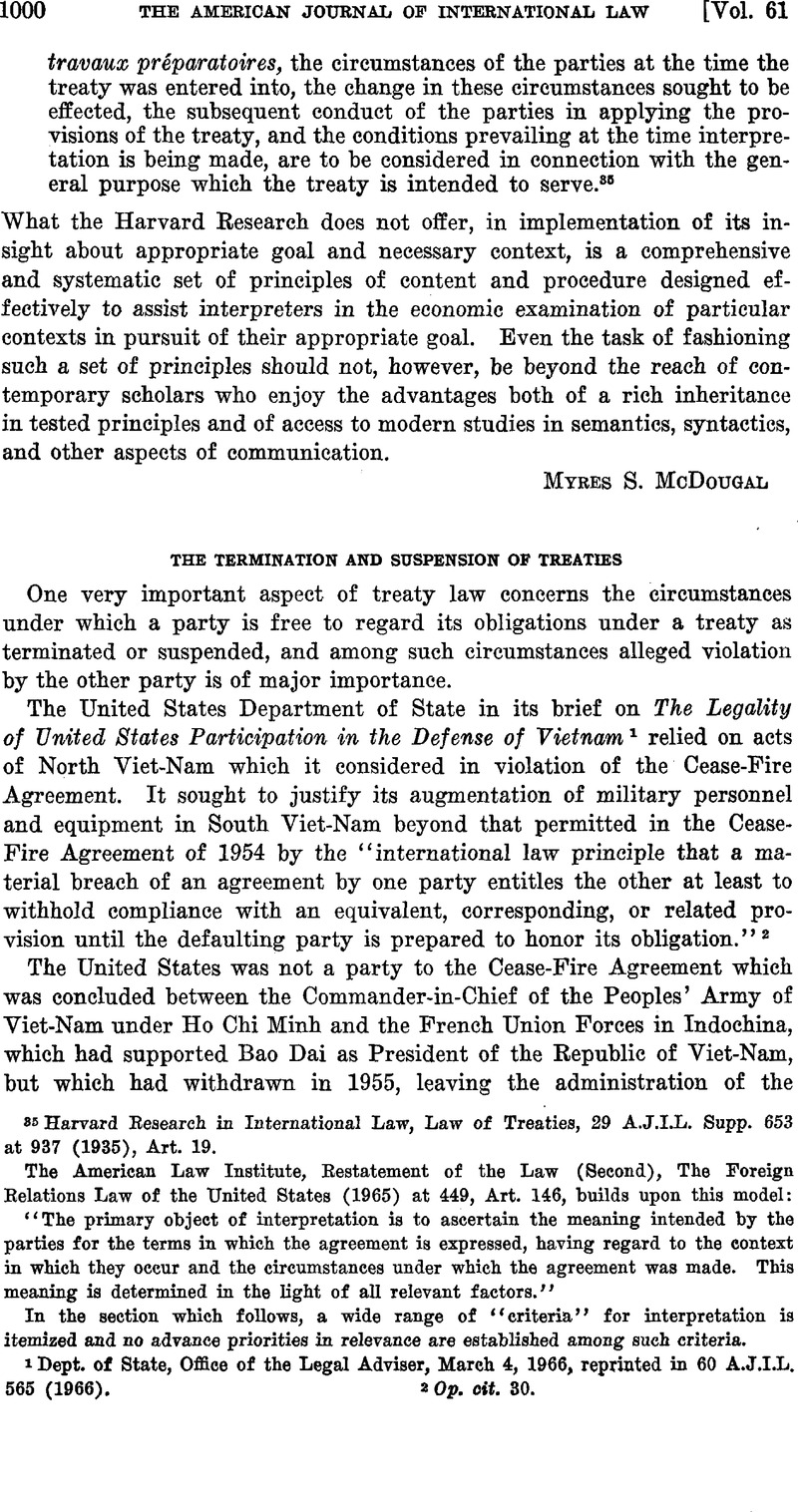Article contents
The Termination and Suspension of Treaties
Published online by Cambridge University Press: 28 March 2017
Abstract

- Type
- Editorial Comment
- Information
- Copyright
- Copyright © American Society of International Law 1967
References
1 Dept. of State, Office of the Legal Adviser, March 4, 1966, reprinted in 60 A.J.I.L. 565 (1966).
2 Op.cit. 30..
3 60 A.J.I.L. 750, 761 (1966).
4 Ibid. 757, 781.
5 Draft, Art. 62, par. 2. Report of the International Law Commission on its 18th Session, May 4-July 19, 1966, General Assembly, 21st Sess., Official Records, Supp. No. 9 (A/6309/Rev. 1), pp. 89-90; 61 A.J.I.L. 438, 441 (1967).
6 Ibid.
7 “Art. 27. Violation of Treaty Obligations, (a) If a State fails to carry out in good faith its obligations under a treaty, any other party to the treaty, acting within a reasonable time after the failure, may seek from a competent international tribunal or authority a declaration to the effect that the treaty has ceased to be binding upon it in the sense of calling for further performance with respect to such State. ‘ ‘ (b) Pending agreement by the parties upon and decision by a competent international tribunal or authority, the party which seeks such a declaration may provisionally suspend performance of its obligations under the treaty vis-à-vis the State charged with failure. “ (c) A provisional suspension of performance by the party seeking such a declaration will not be justified definitively until a decision to this effect has been rendered by the competent international tribunal or authority.” 29 A.J.I.L. Supp. 662 (1935); and elaborate commentary setting forth practice and opinion on the subject, ibid. 1077-1096.
- 1
- Cited by




